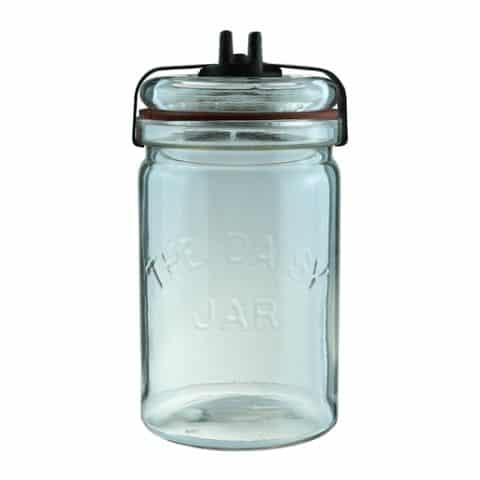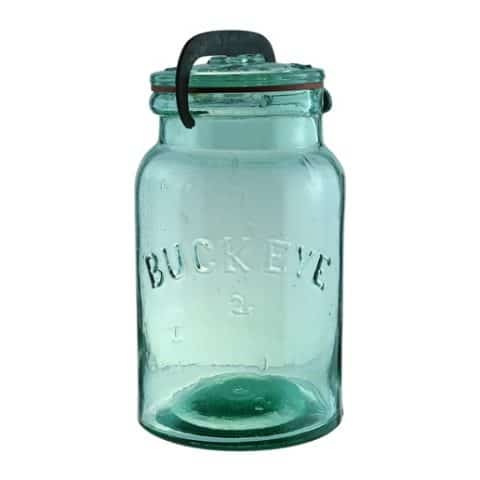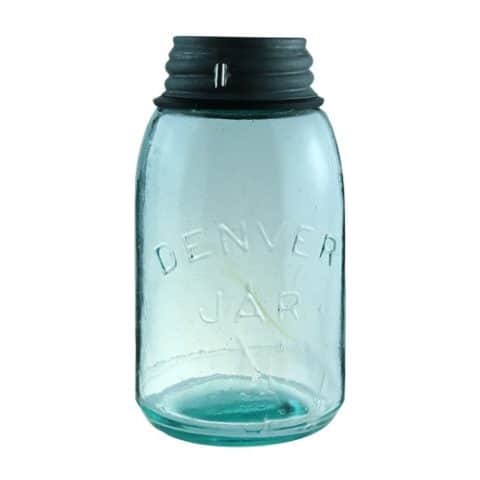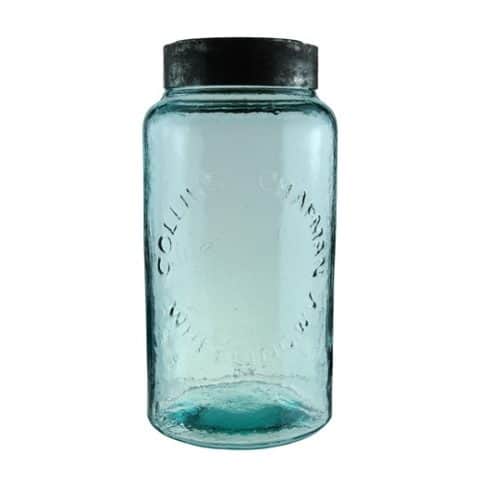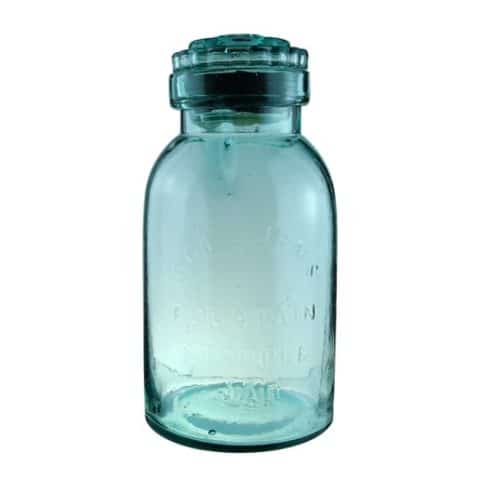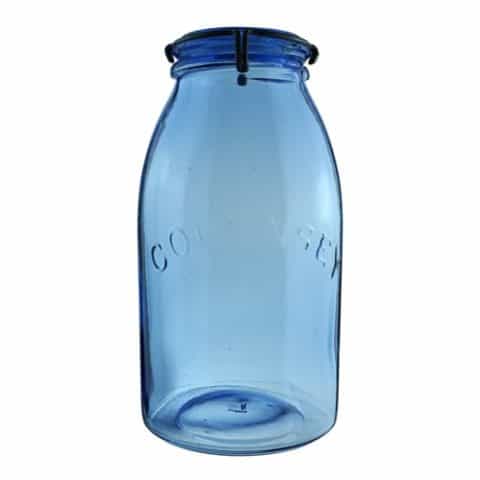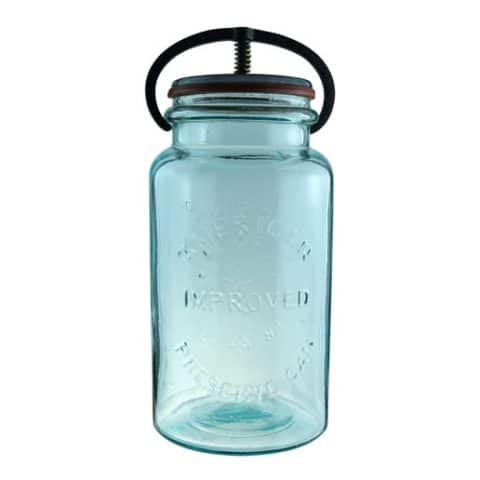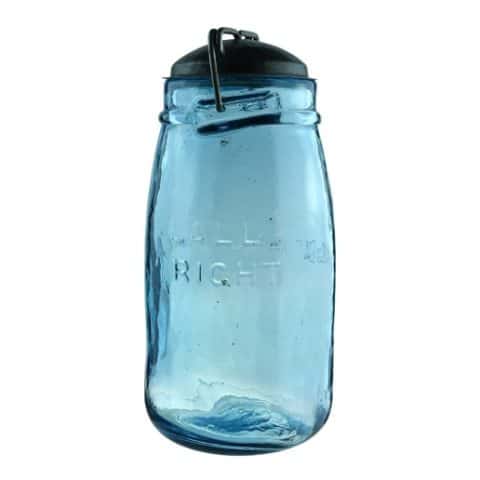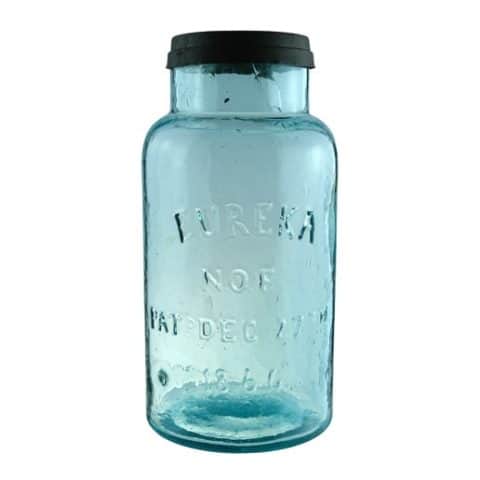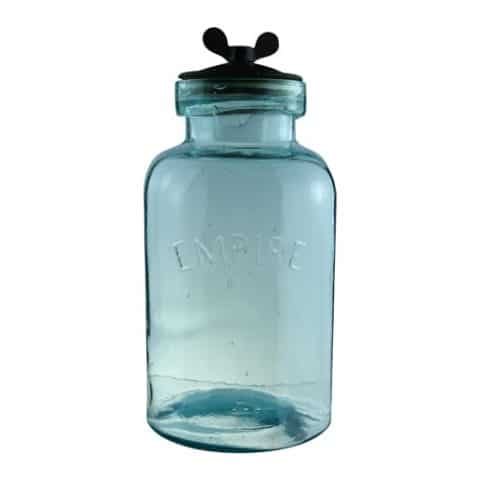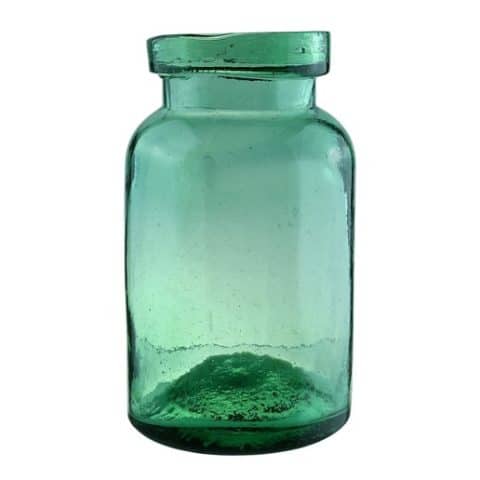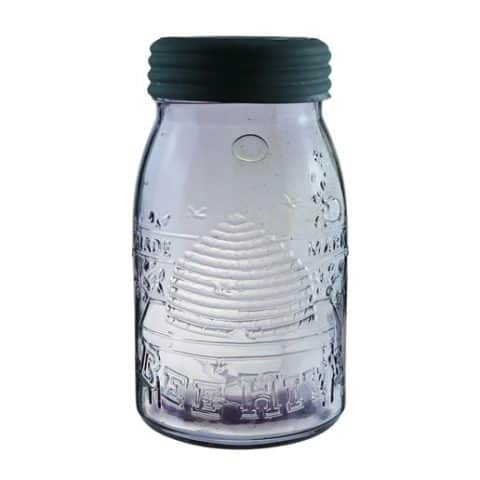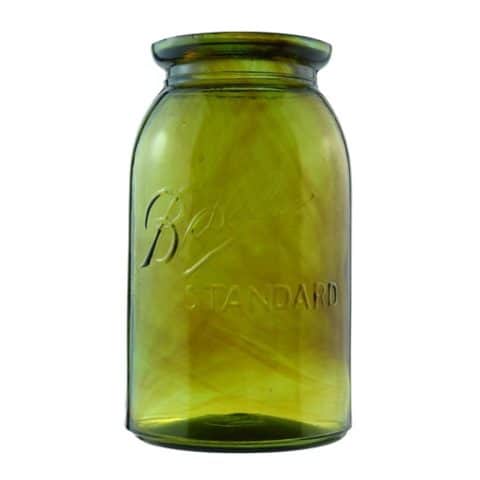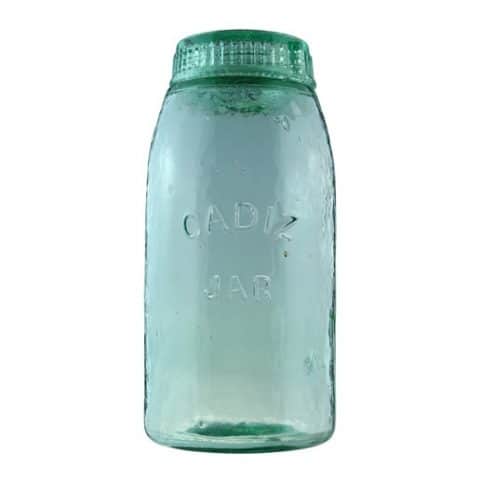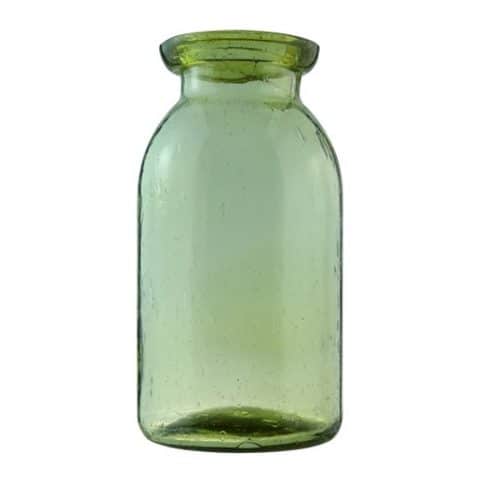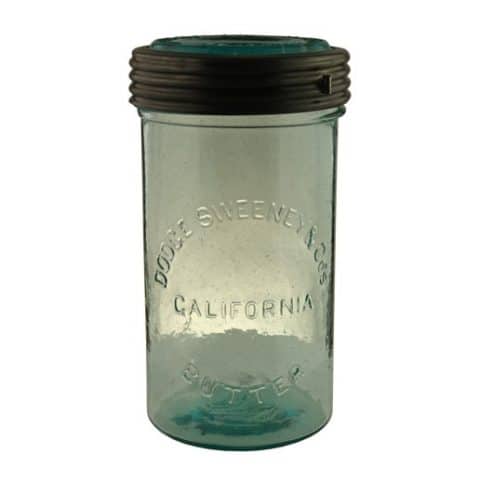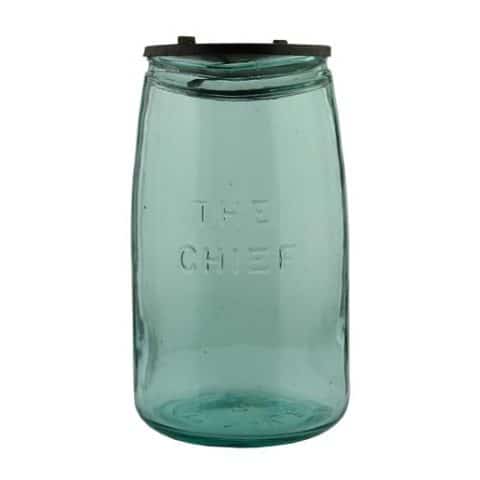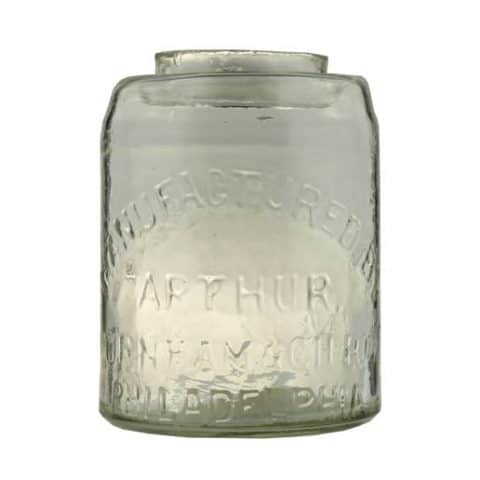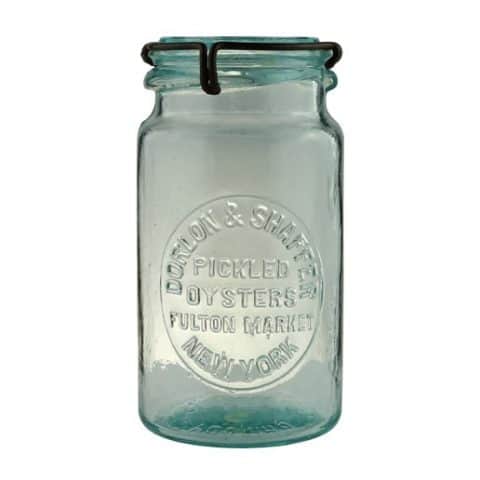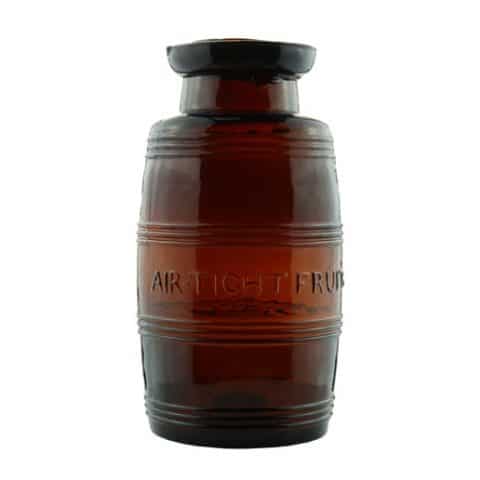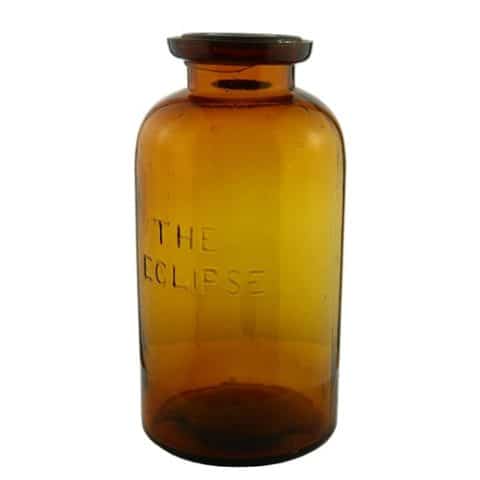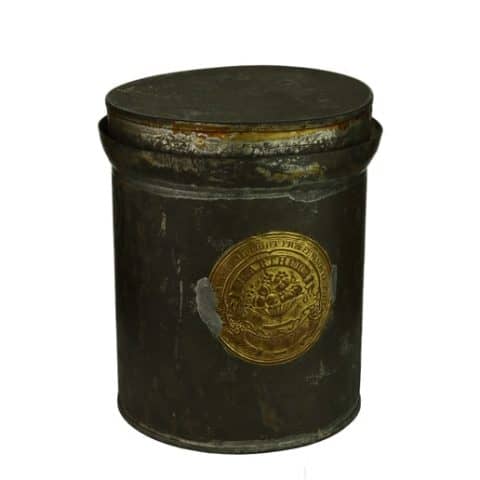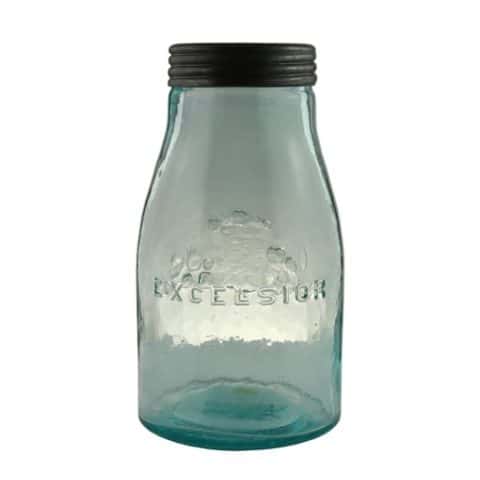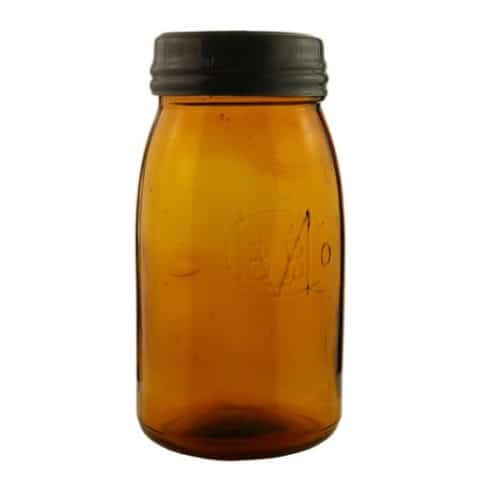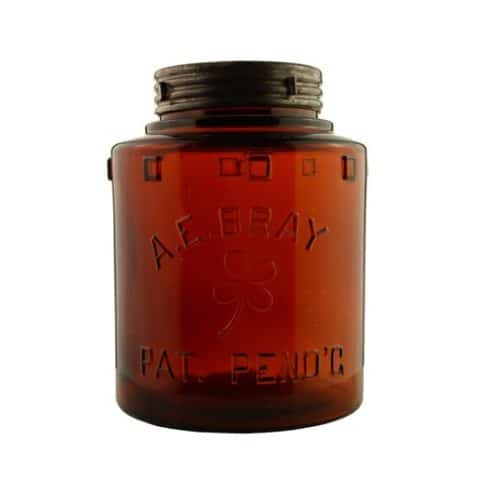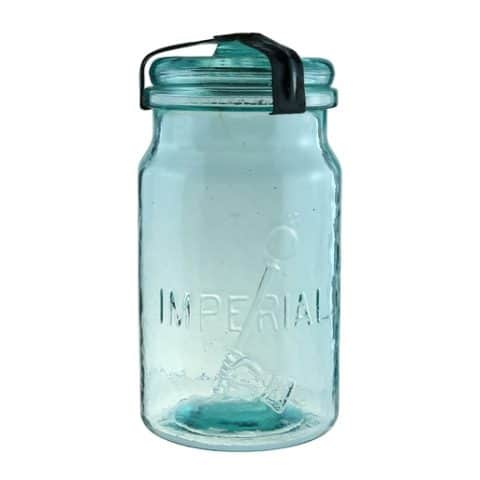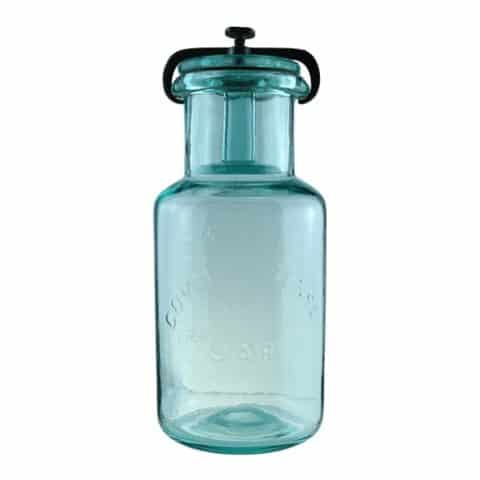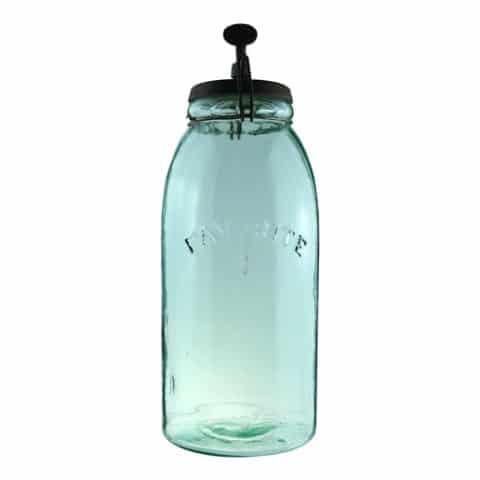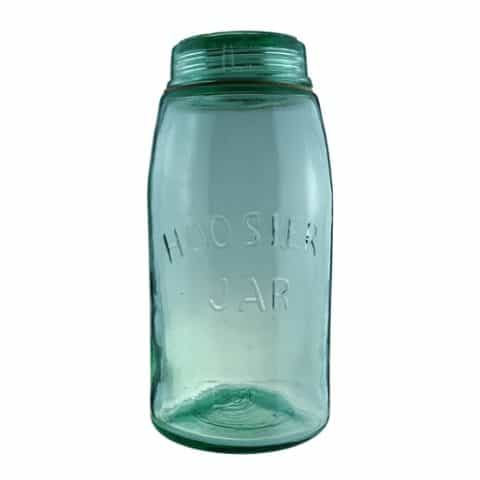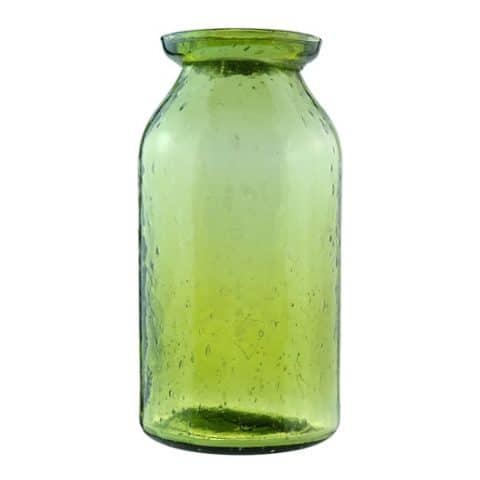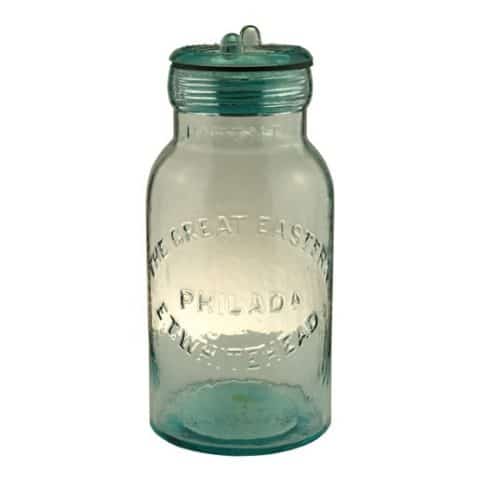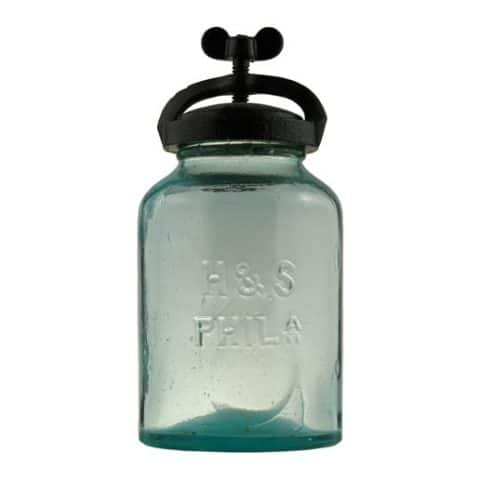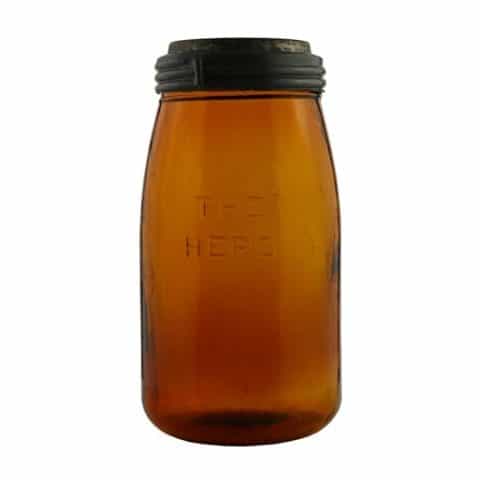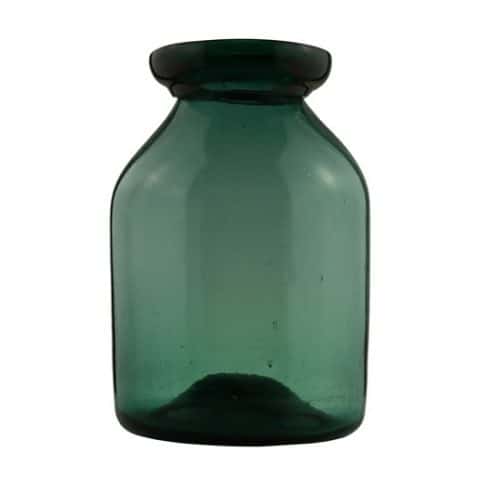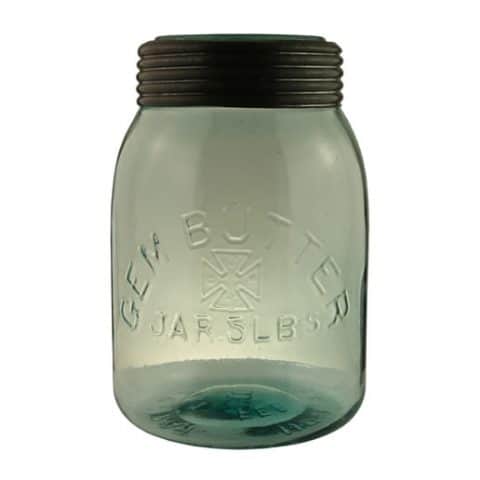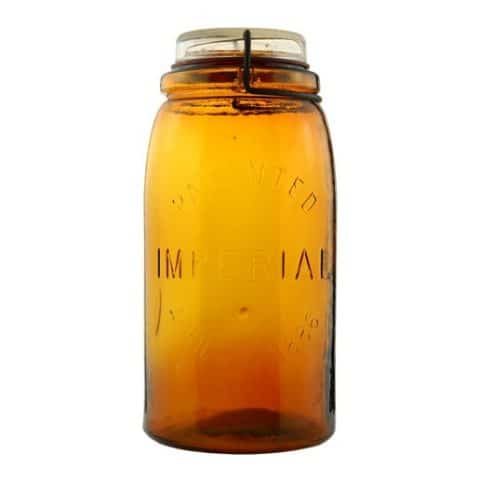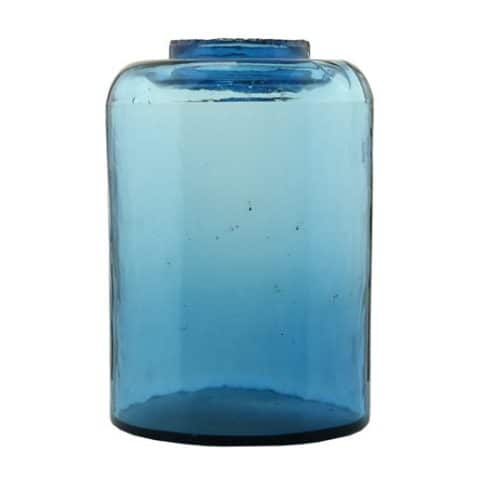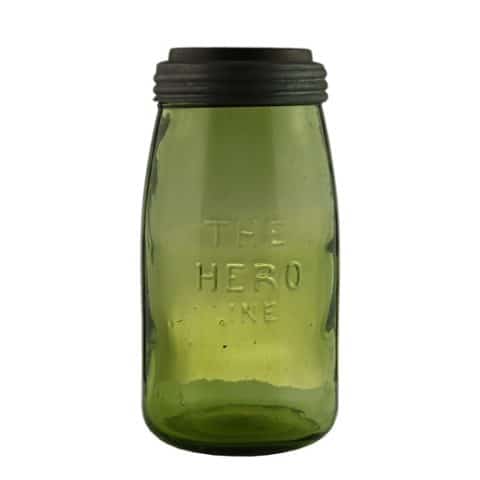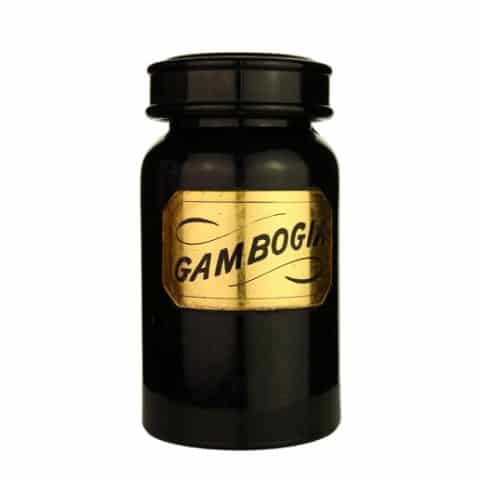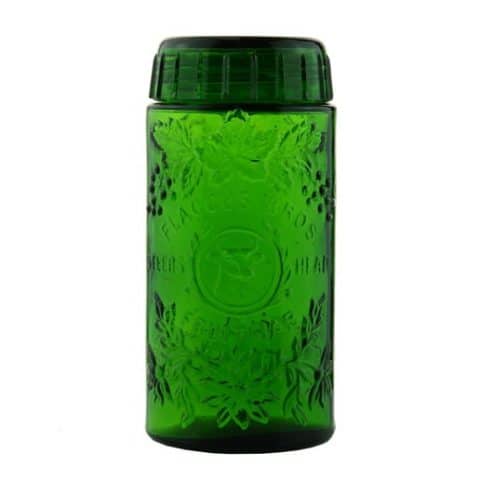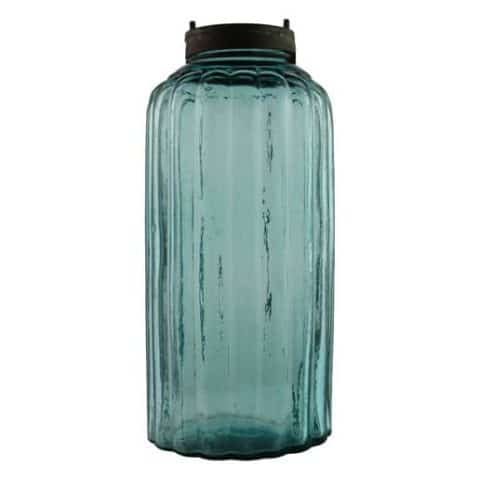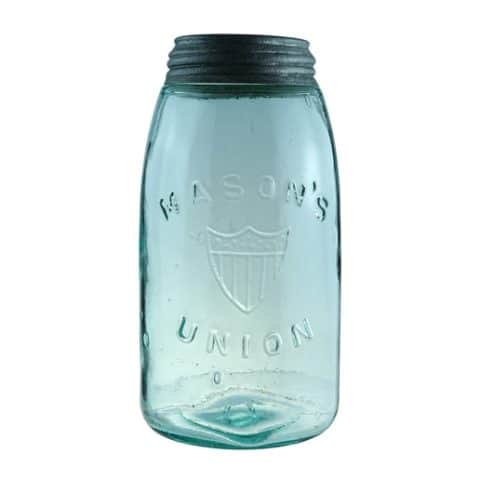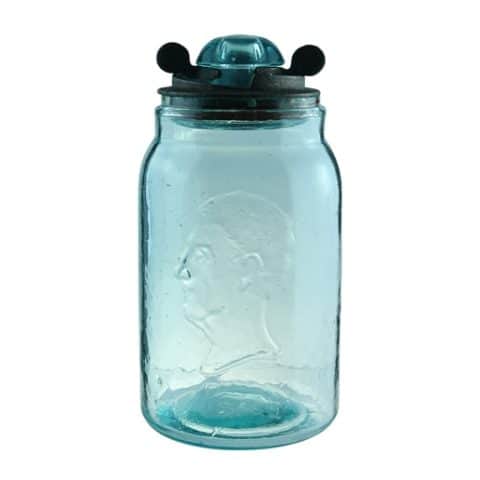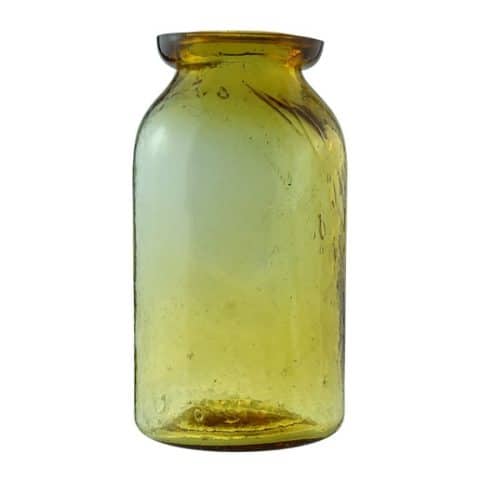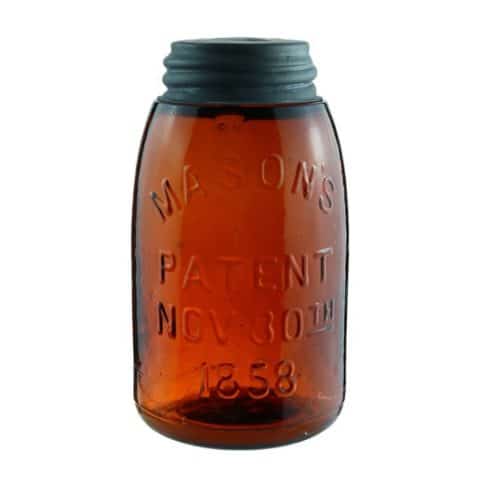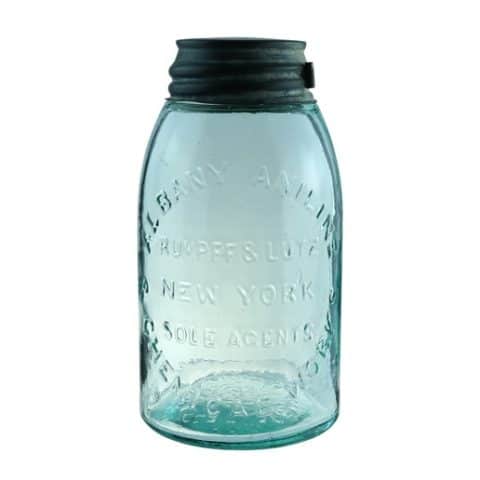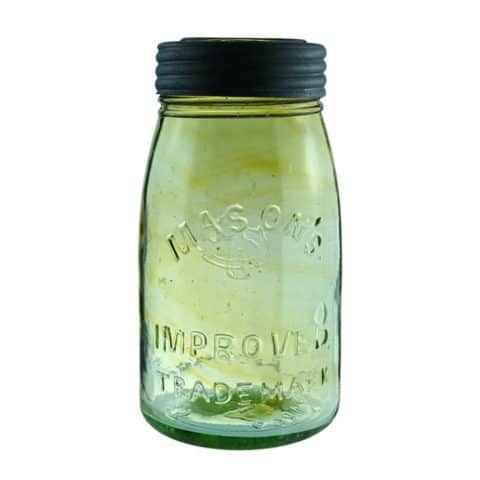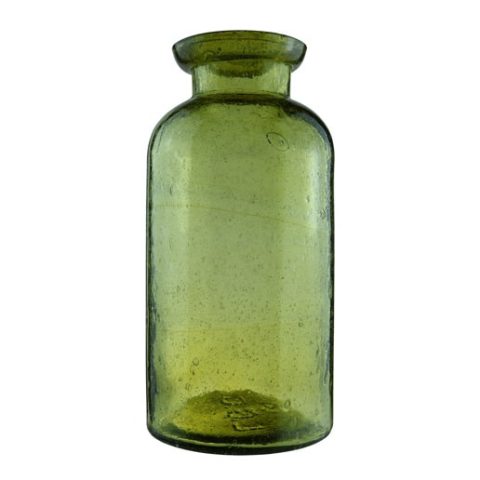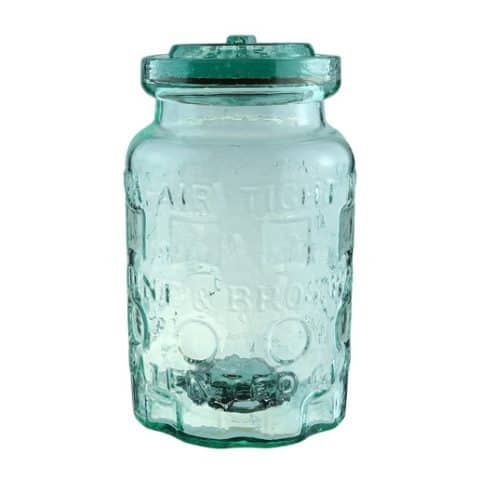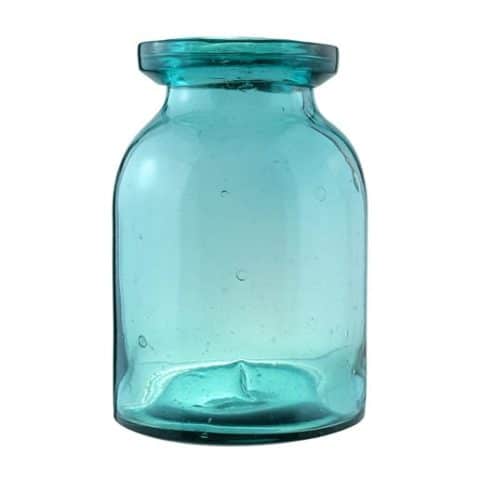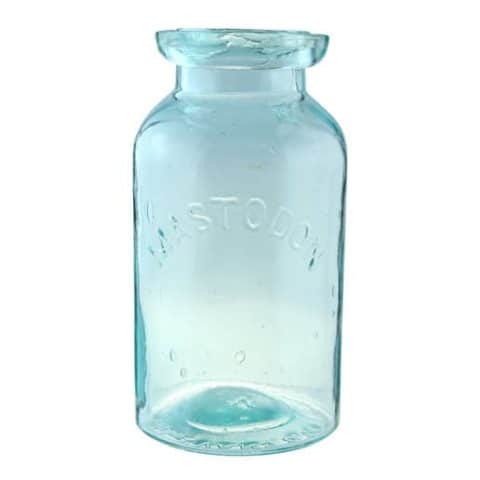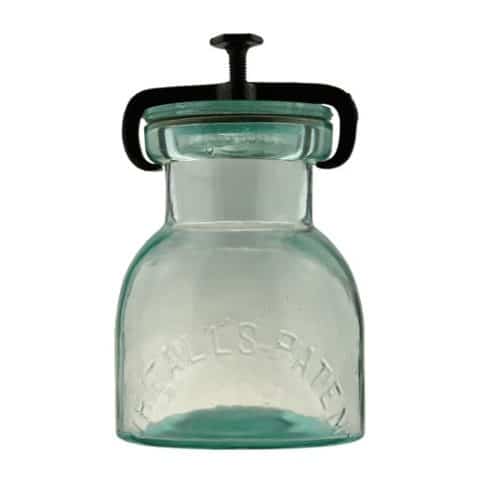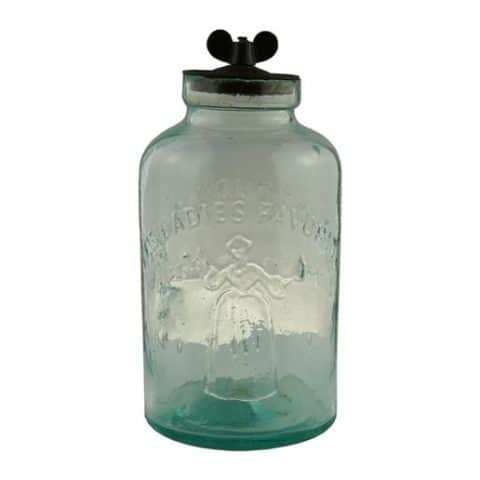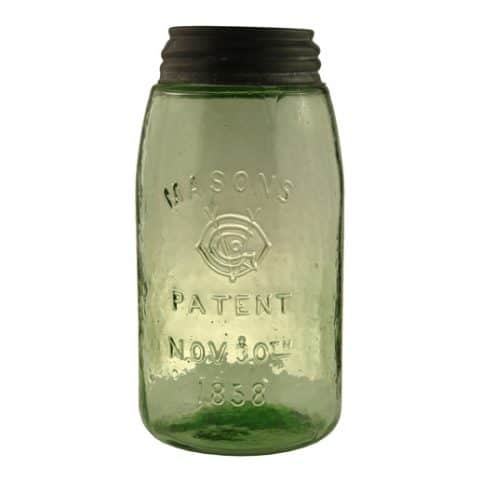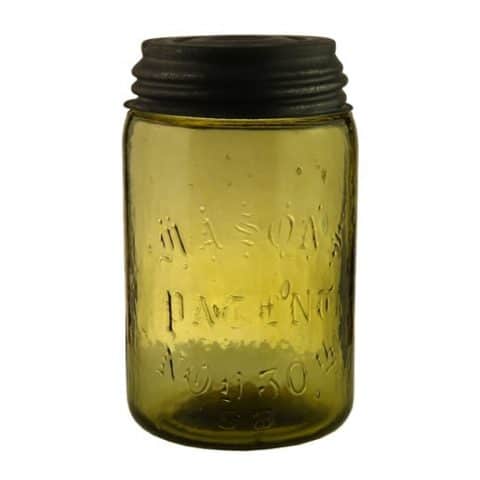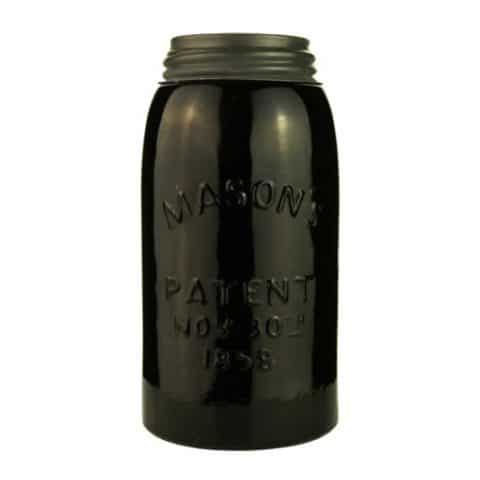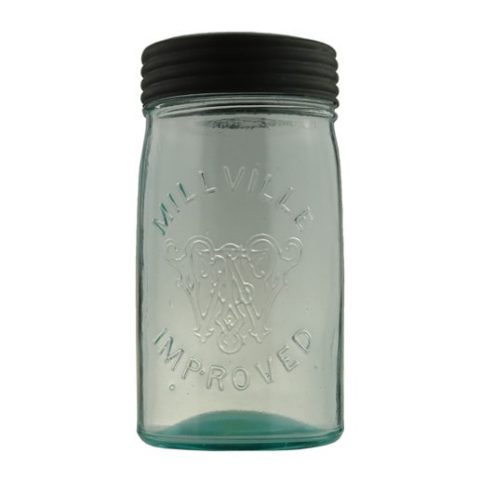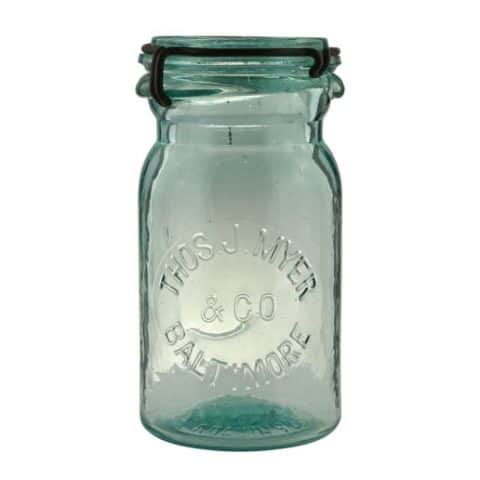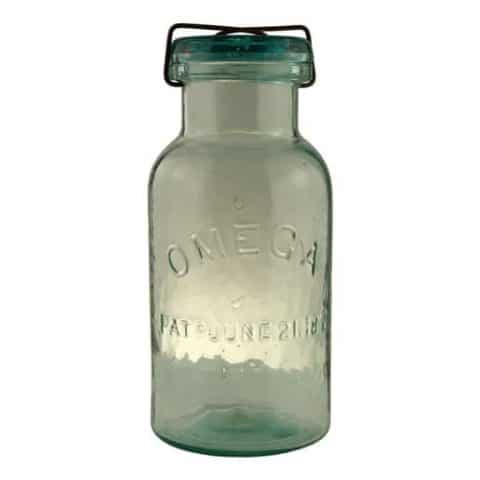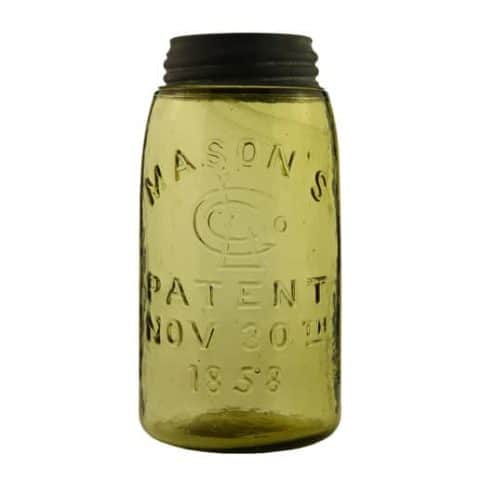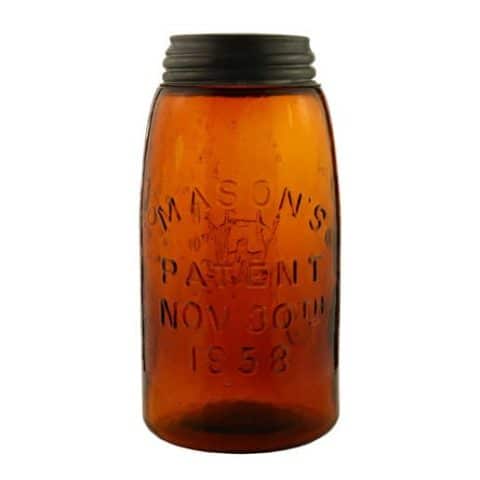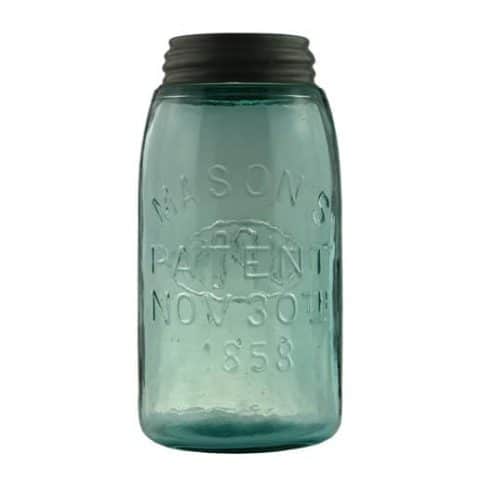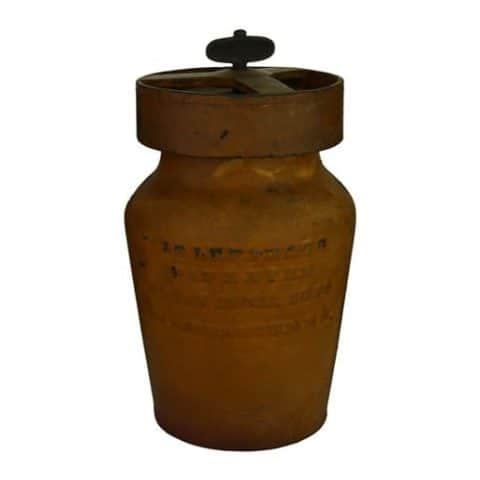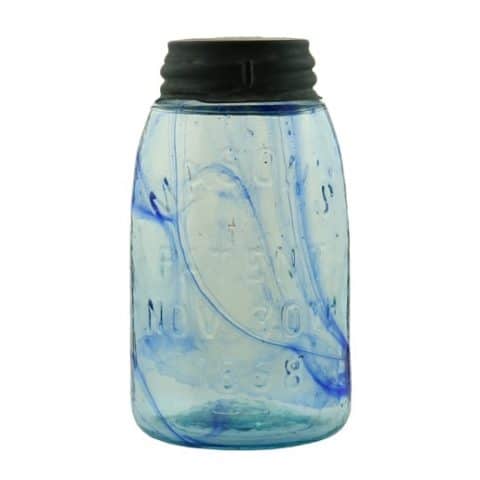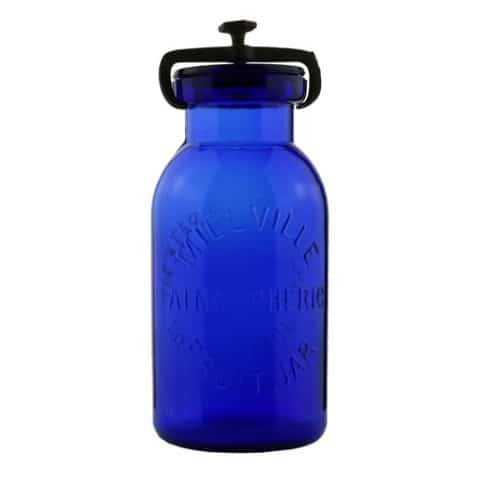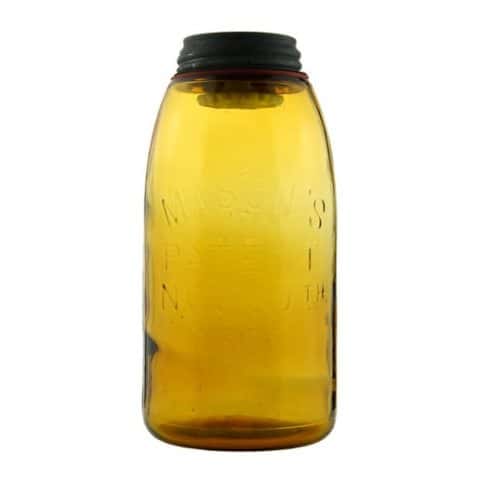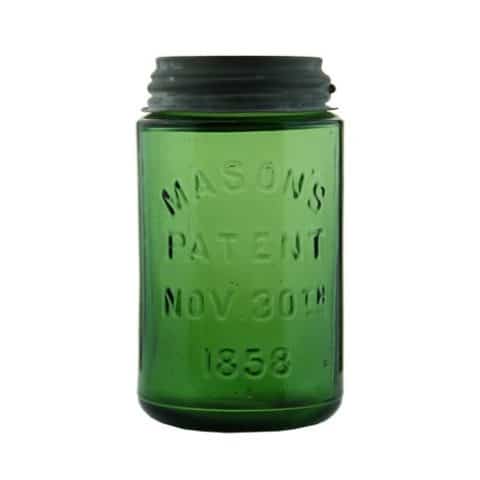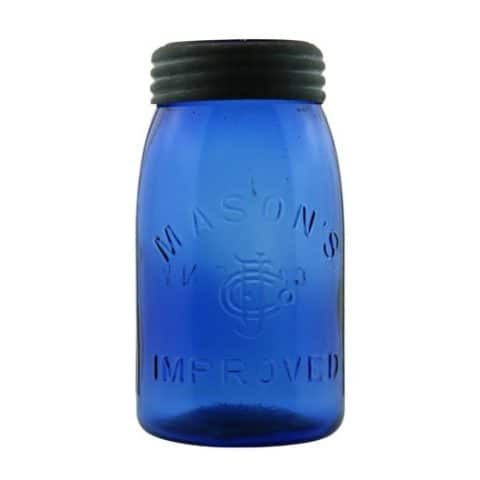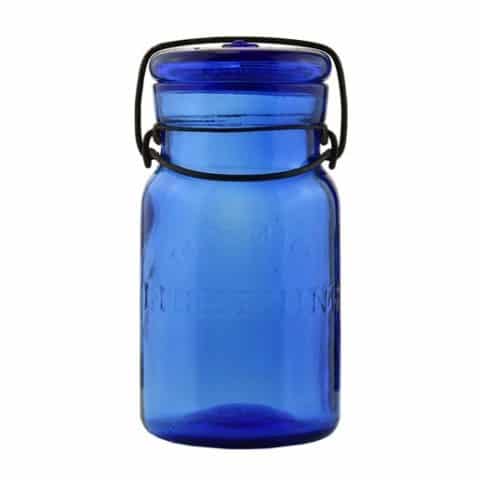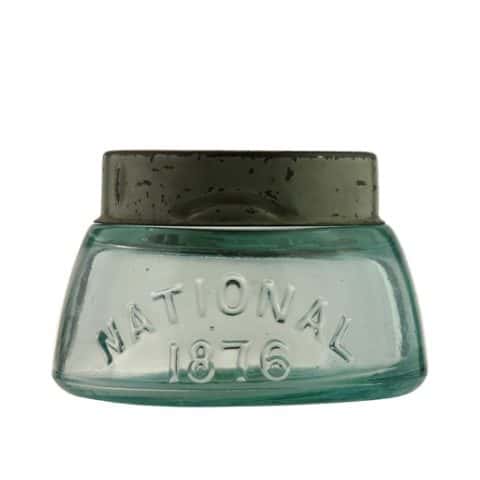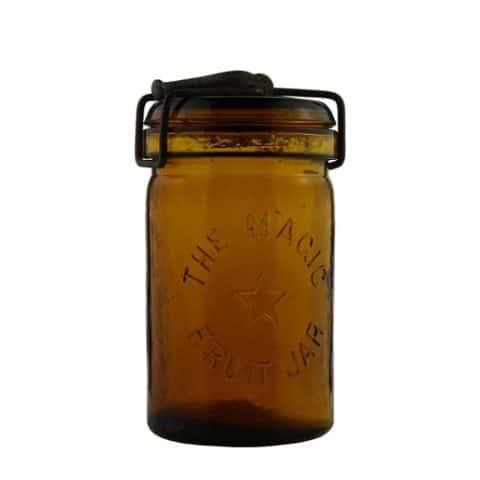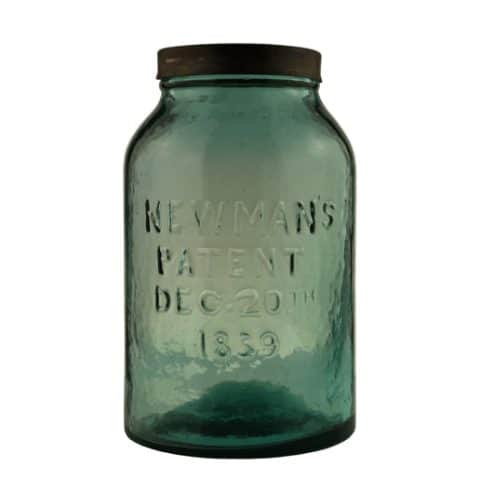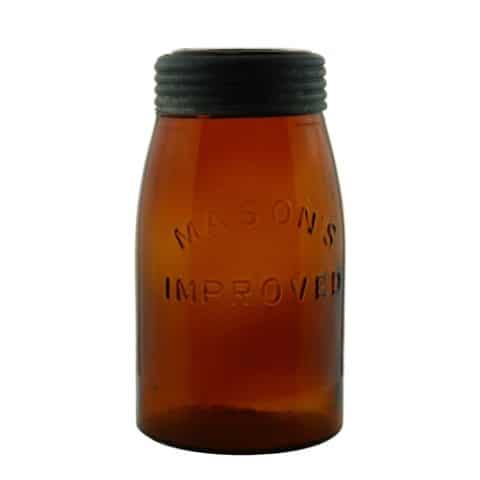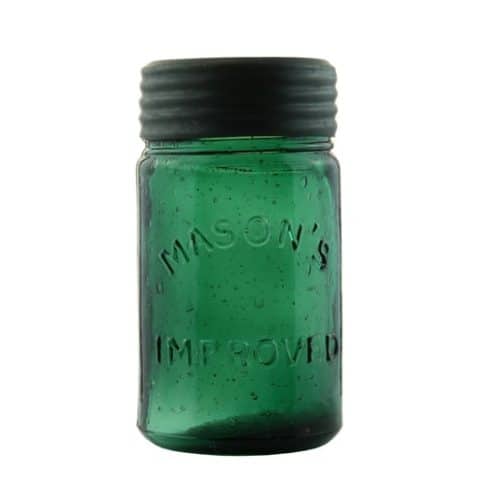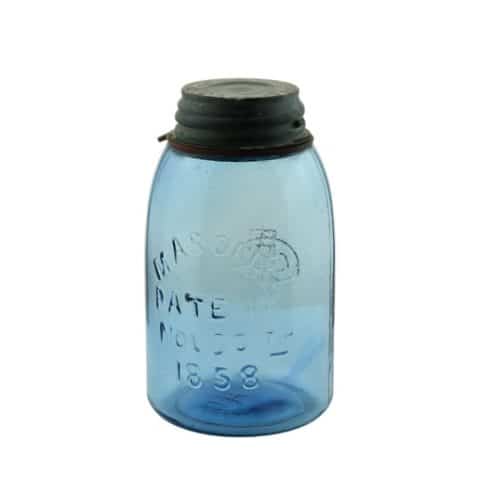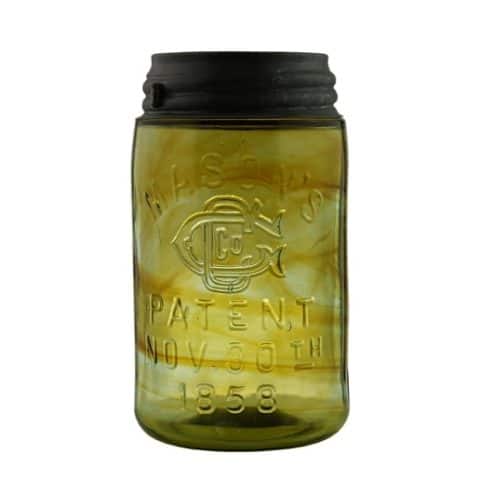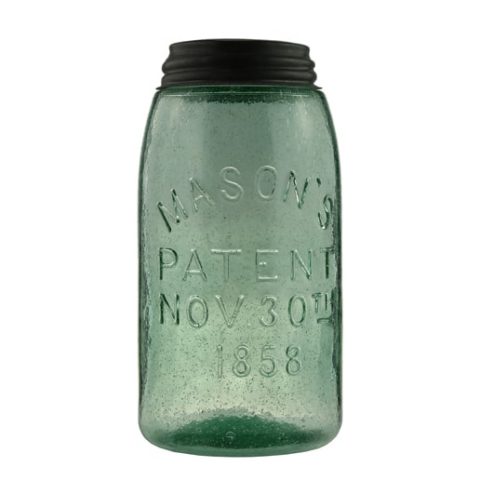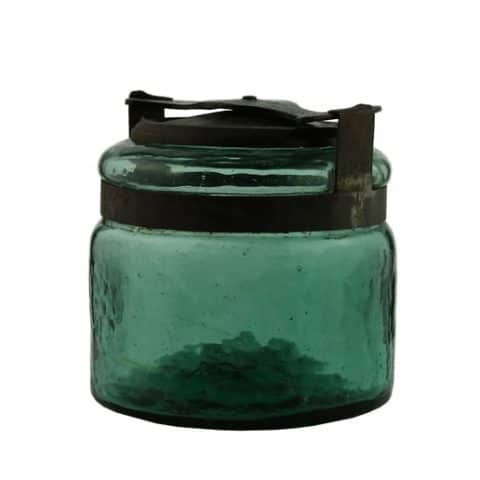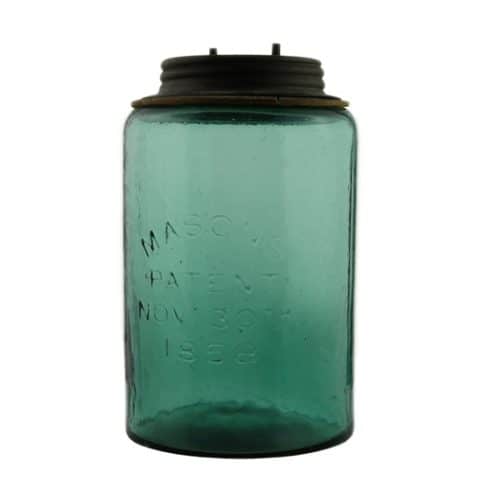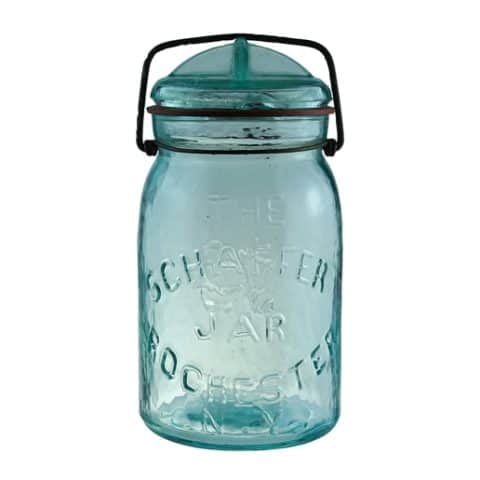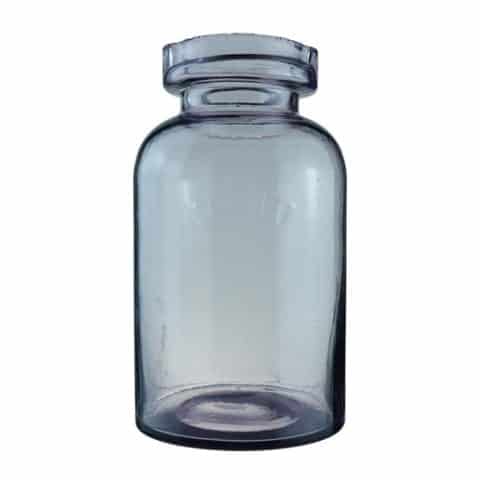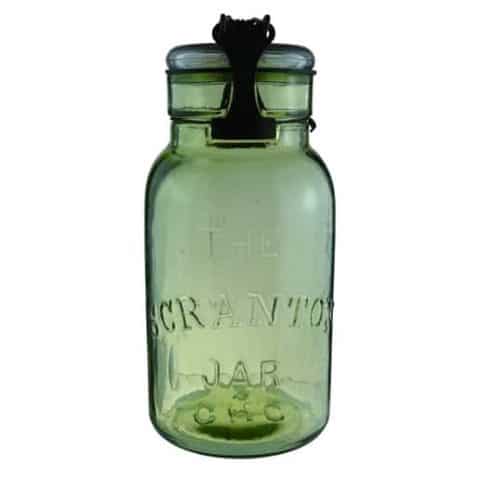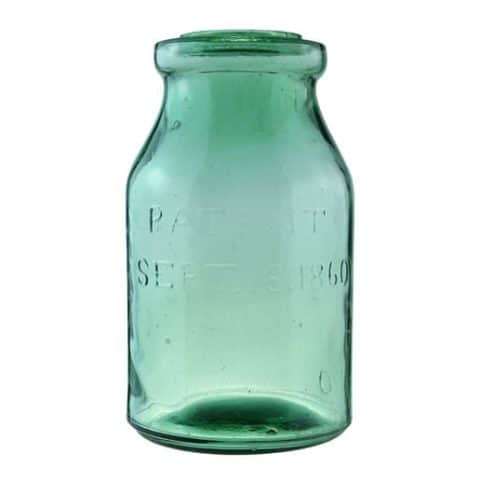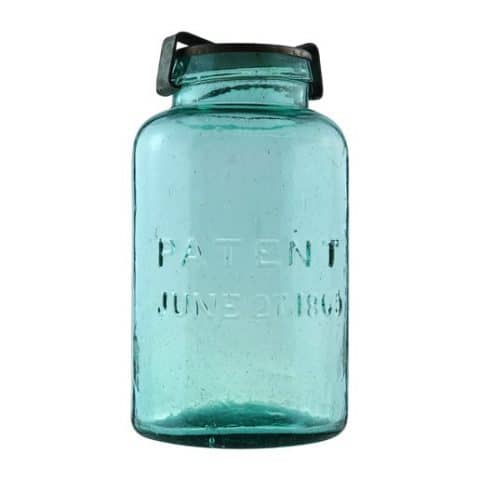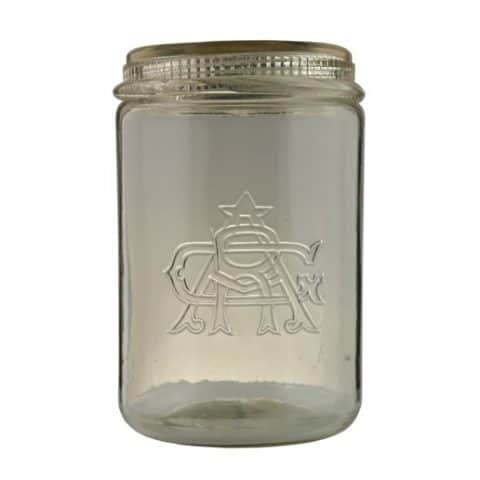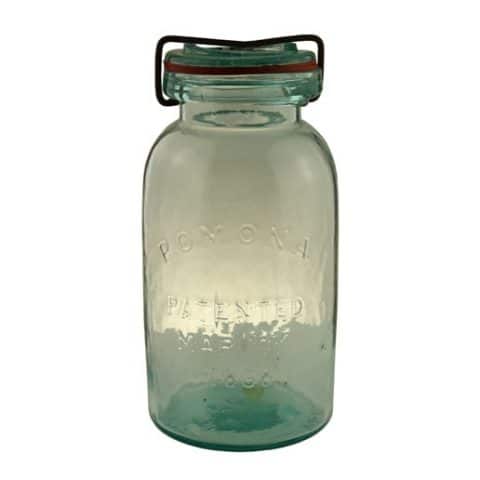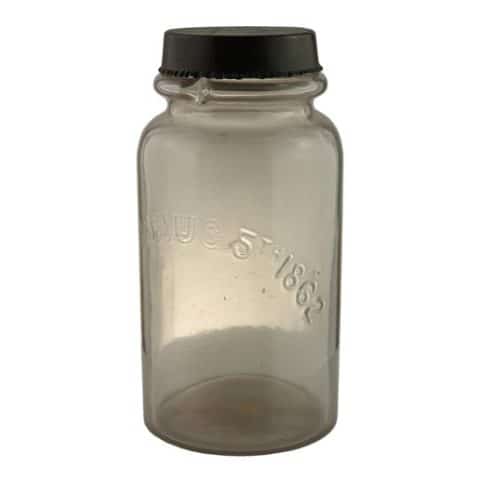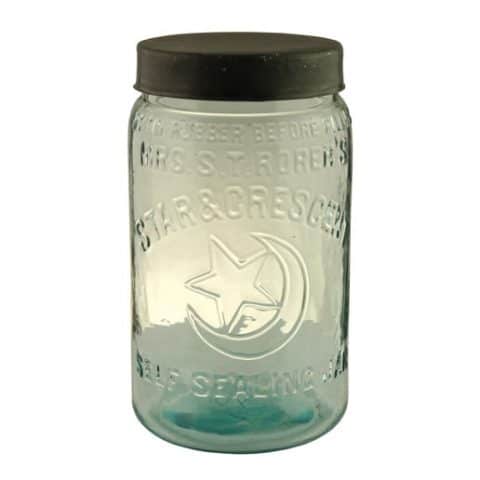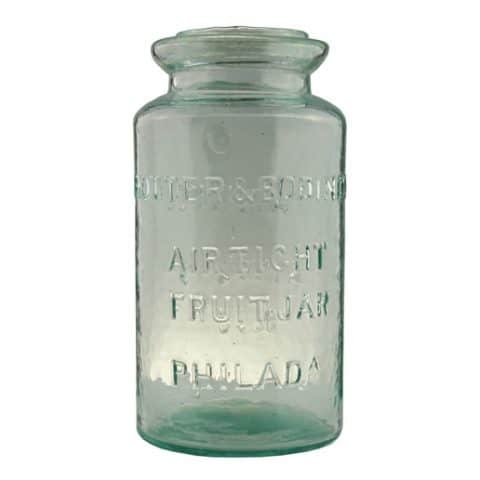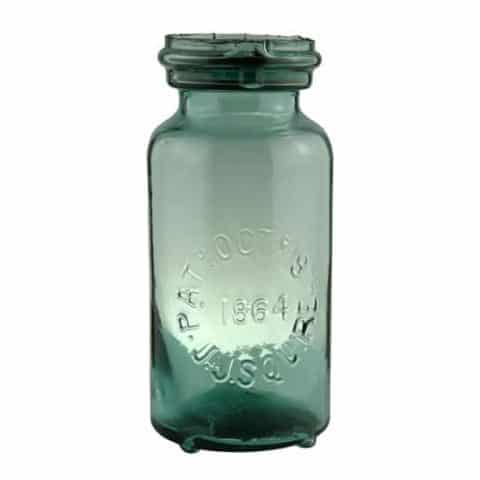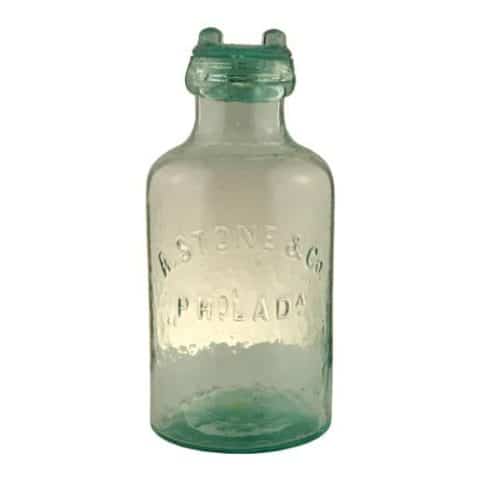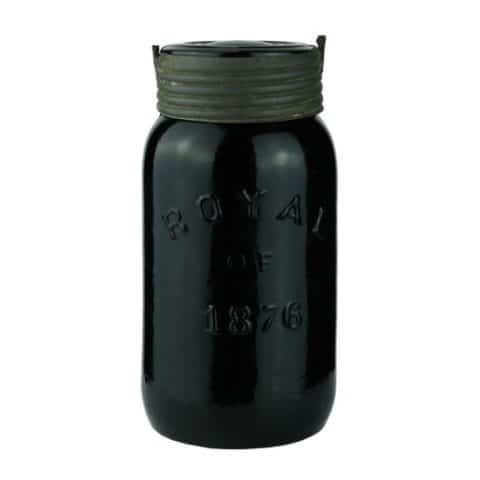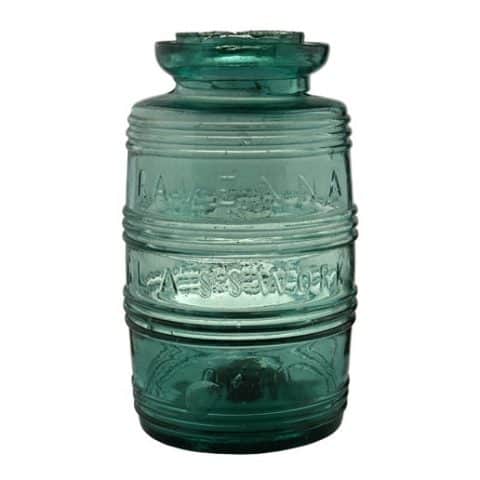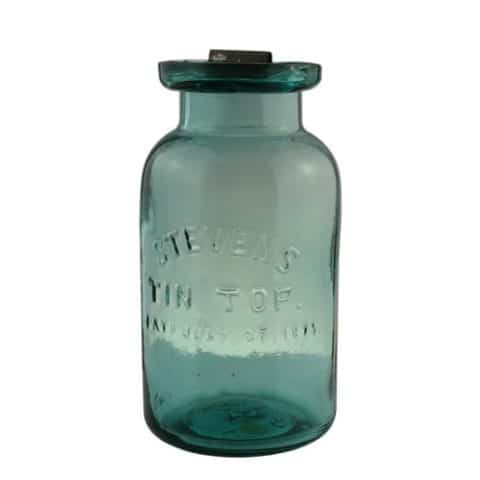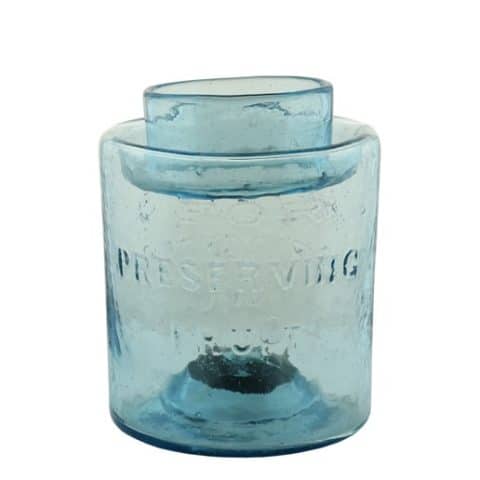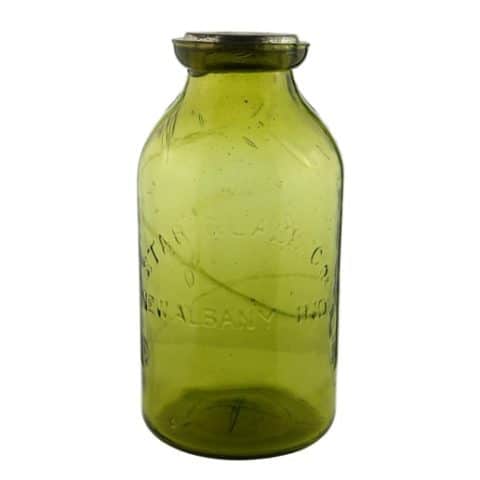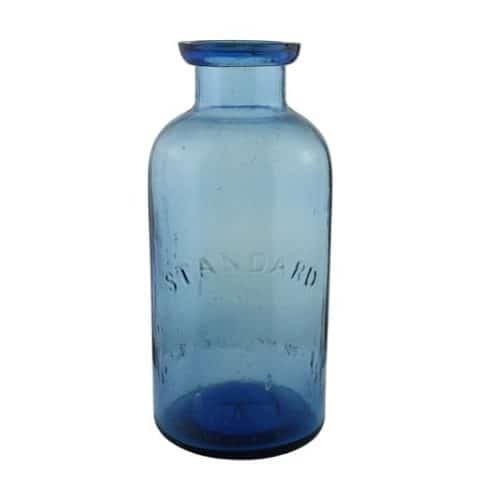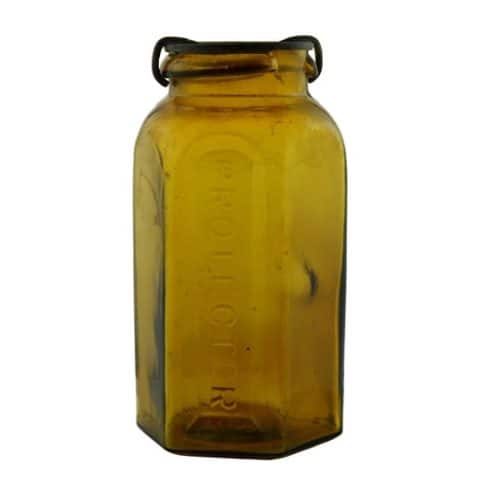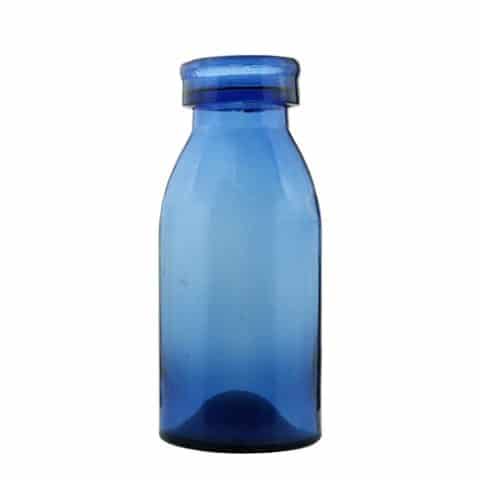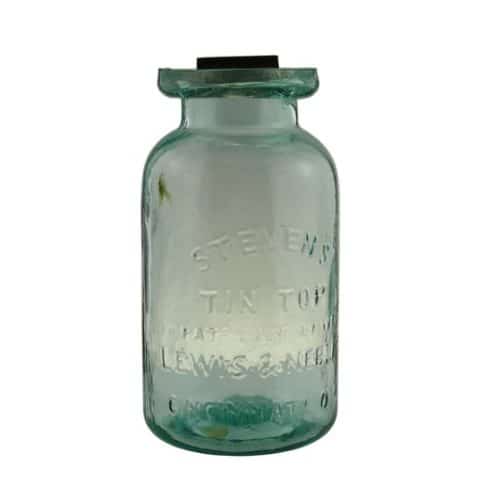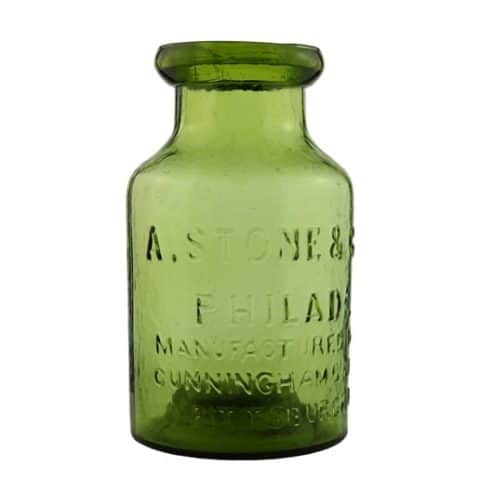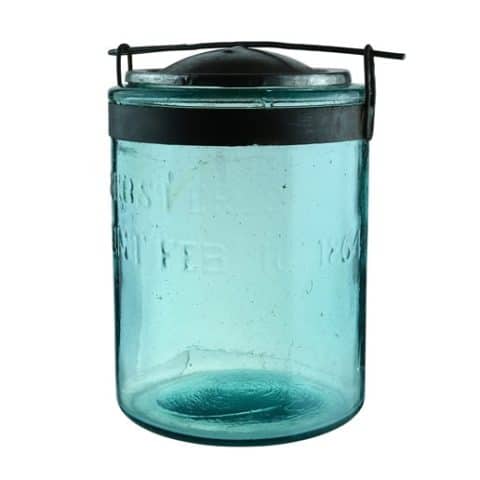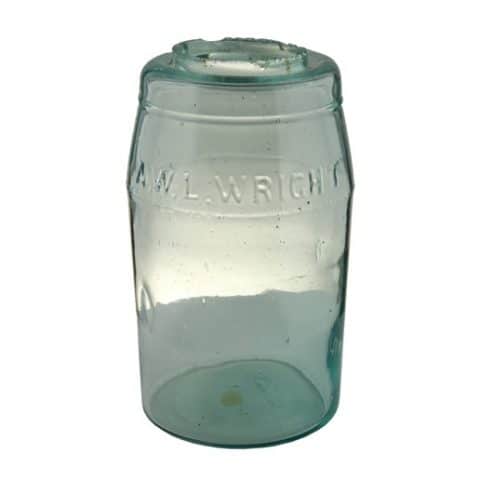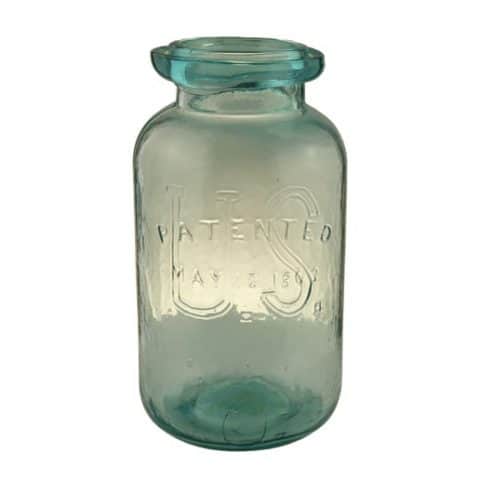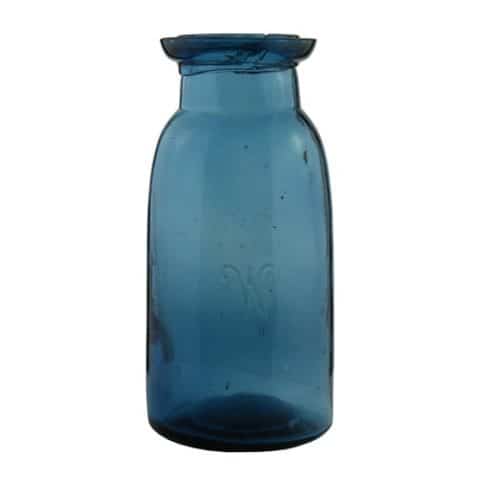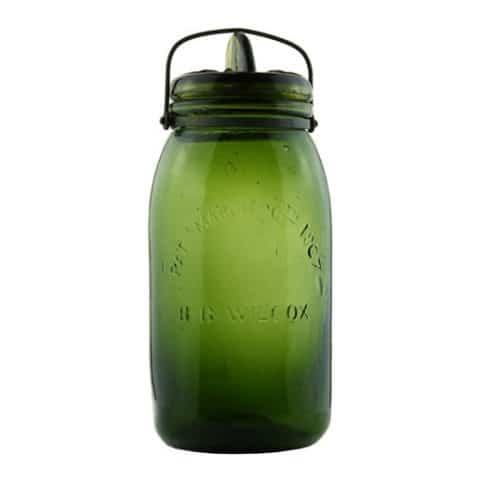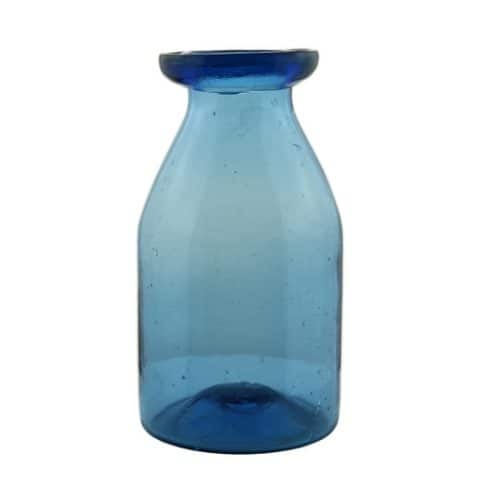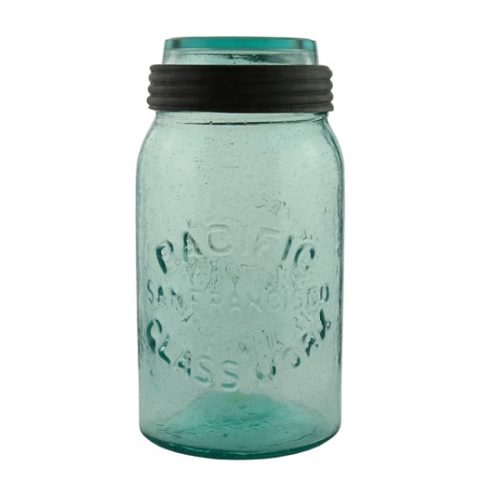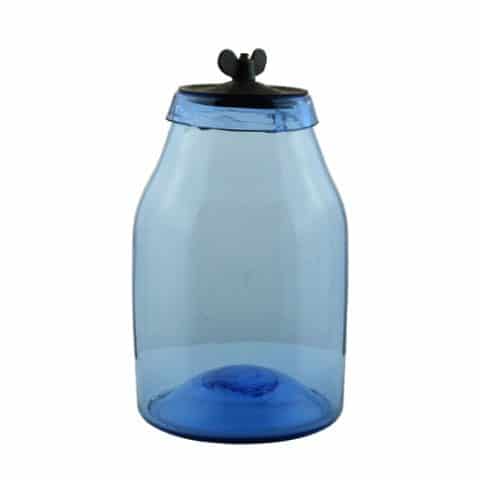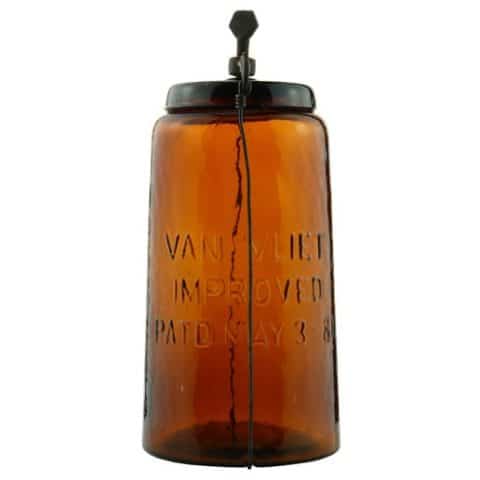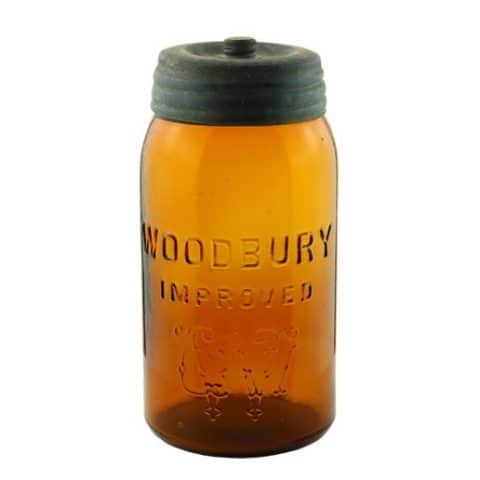Doctor Ramsay’s Pat. April 17 1866
Doctor Ramsay’s
Pat. April 17 1866
Dr. George M. Ramsay, New York City, New York
Aquamarine Quart
Provenance: Phil Smith Collection
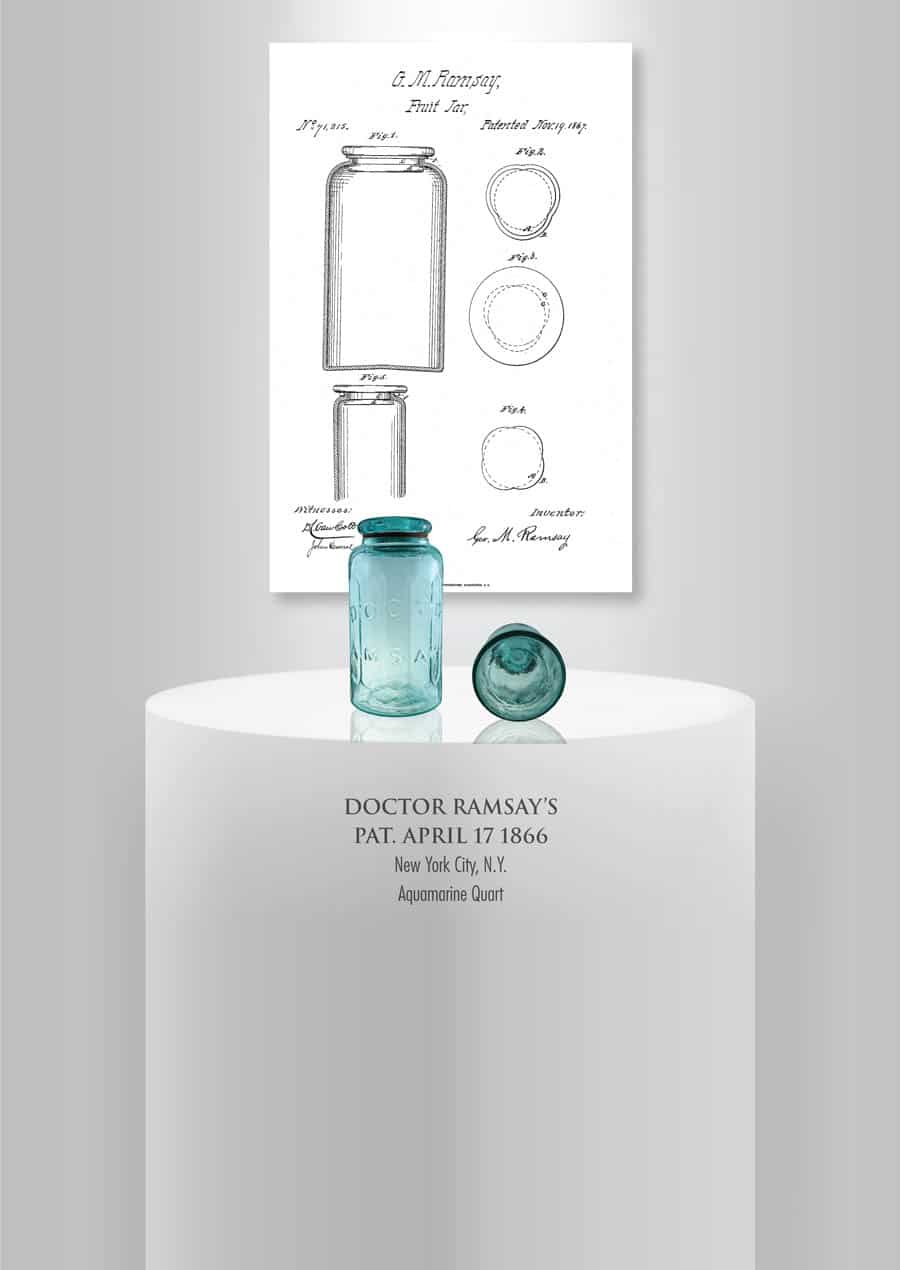
George M. Ramsay received Patent No. 54,015 on April 17, 1866, and Patent No. 71,215 on November 19, 1867, for his extremely rare fruit jar. Our museum example represents his twelve-sided, mouth-blown, oval-based jar as the mouth, stopper, and the base is oval-shaped. The maker of the jar is unknown.
This extremely rare aquamarine quart is embossed in two lines ‘DOCTOR RAMSAY’S’ on the face of the jar. The word “Doctor” is slightly arched over a straight-line “Ramsay’s.” Both words are in a bold rounded sans serif typestyle. The jar has slightly recessed fluted panels that extend down to an area above the bottom. One letter occurs per panel. There is a tight rounded shoulder and a minimal neck terminating in a rough mouth rim. The original unembossed glass stopper sits over a rubber gasket. The base of the jar is embossed ‘PAT. APRIL 17 1866.’
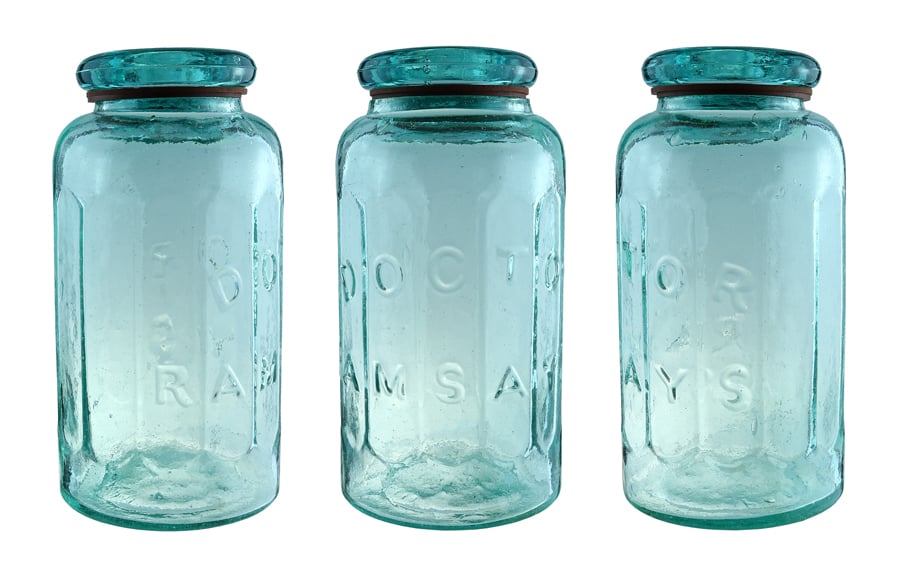
The jar is listed as an aquamarine quart in two variants. The second variant has the fluting terminating at the base, as in the example pictured below. There are two variations of the lids and one lid reported in green, but with no jar that is also shown.
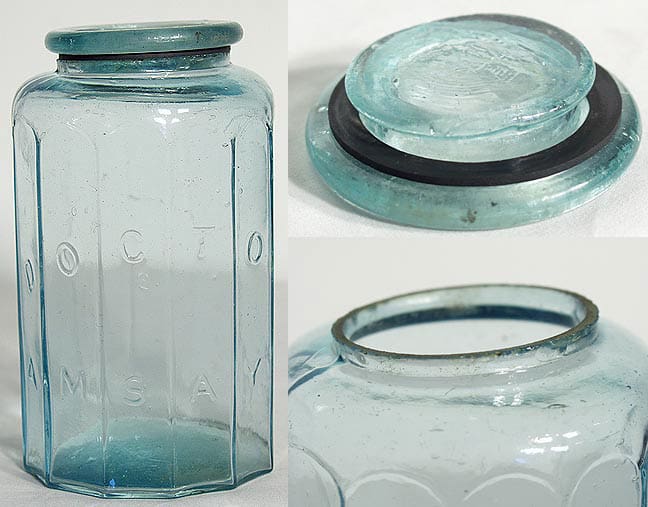
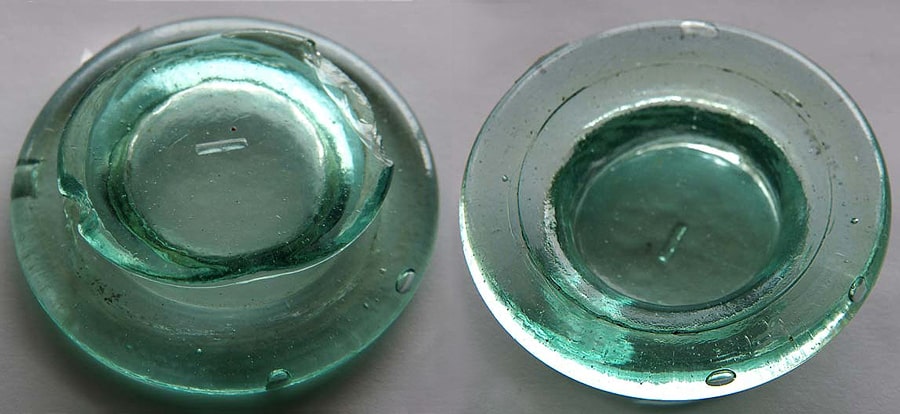
There is another extremely rare variant of the Ramsay jar, which is twelve-sided and embossed ‘THE RAMSAY JAR’ in three straight horizontal lines of rounded sans serif copy. There is one letter to each panel typography line. As in our museum example, the panel indentions stop short of the jar base.
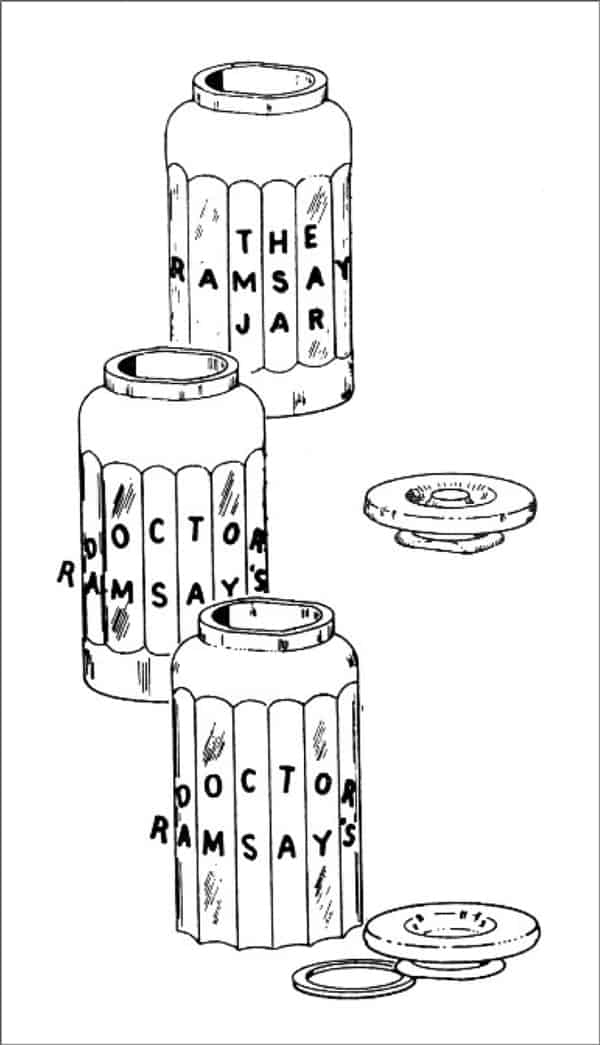
George M. Ramsay
Dr. George McIlvaine Ramsay was one of the best-known citizens of Washington County, Pennsylvania, where he was born on April 19, 1820, to parents Josiah and Catharine. He attended Jefferson Medical College of Thomas Jefferson University in Philadelphia, Pennsylvania.
We must point out that the spelling of “Ramsay” and “Ramsey” is inconsistent in historical records. In some cases, both spellings are used in the same document, such as his obituary. It could be two different “George M.’s” we are discussing, but that is doubtful as historical records align.
George M. Ramsay served throughout the Civil War as a surgeon in the 95th Regiment, New York Infantry, and rose to Surgeon General of the command at the close of the war. He moved to New York City, where he practiced medicine. His patent for constructing fruit jars dated April 17, 1866, notes that the “Oval mouth admits the Oval flange of the lid, the rotation of the ladder brings the major diameter of the flange coincident with the minor axis of the opening and locks the flange under the neck of the bottle.” Interestingly, his patent says “Fruit Jar,” which has a much broader market. You could also see him putting cotton balls or tongue depressors in the jars.
G. M. Ramsay Fruit Jar Patent. George M. Ramsay received Patent No. 54,015 on April 17, 1866, and Patent No. 71,215 on November 19, 1867, for his extremely rare fruit jar.
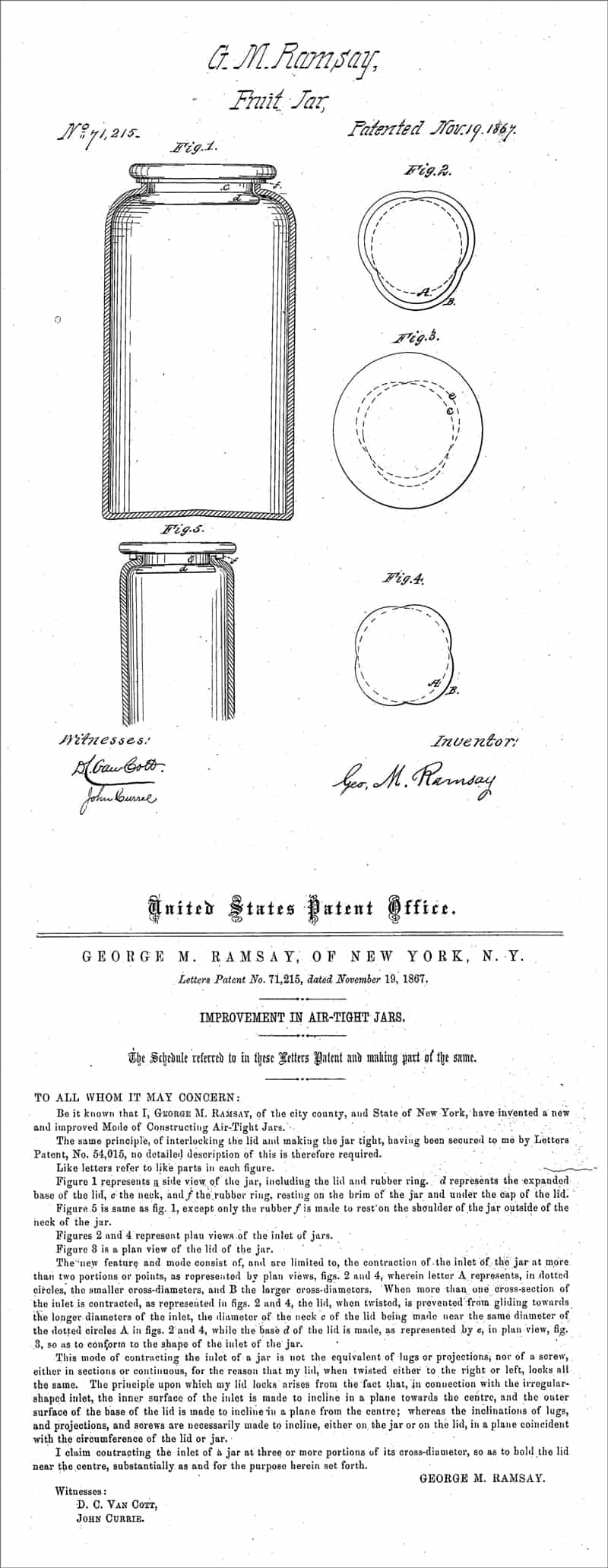
Dr. Ramsay moved back to Washington County and lived on a farm in South Strabane Township, about three miles east of Washington, where he spent the remaining years of his life.
Ramsay made a life study of astronomy and had written works on the subject. He was the author of Cosmogony, published in New York, and Philosophy and Phenomena, a scientific work published in Boston. Before entering the medical practice, Dr. Ramsay taught school in Arkansas but was driven out of the state because of his advocacy for the abolition of slavery.
George M. Ramsay was married in 1872 to Anna Martha Gaffney of New York, who died five years later. He had no children but was survived by his two sisters Mrs. Elizabeth Foster Zwingle of Des Moines, Iowa, and Mrs. Eleanor Martin of Ontario, Ohio.
Doctor Ramsay died on April 13, 1902, at the home of Mrs. John W. Warwick at Washington Sabbath, Pennsylvania, at the age of 82.
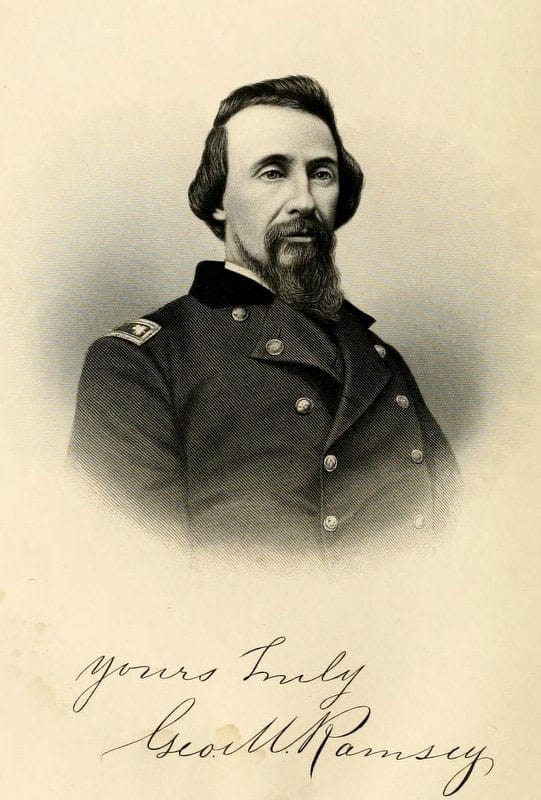
Primary Image: The Doctor Ramsay’s quart jar imaged on location by Alan DeMaison, FOHBC Virtual Museum Midwest Studio
Support Image: Embossed “Doctor Ramsay’s” quart with twelve panels terminating at the bottom of the jar. – Greg Spurgeon, North American Glass.
Support Image: Aquamarine quart “The Ramsay Jar” alone in rotational images. Darrell Plank collection.
Support Image: DOCTOR RAMSAY’S Jar. This rare variety has fluted panels that extend down to the heel. Good embossing and excellent condition. Ground rim has the usual minor roughness. Original glass stopper is near perfect, with a minor flake on the bottom edge. The base of the jar is unmarked. There is a little deposit on the very bottom of the jar. A rare early jar and a fine example. – Greg Spurgeon, North American Glass past listings.
Support Image: Auction Lot 16339: Original Glass Lid For DOCTOR RAMSAY / THE RAMSAY JAR, Color: Aquamarine, Appearance: shiny glass, Condition: chips on the bottom lug. Fits: The Ramsay Jar and Doctor Ramsay jar – Greg Spurgeon, North American Glass, February 2018
Support: Reference to Red Book #11, the Collector’s Guide to Old Fruit Jars by Douglas M. Leybourne, Jr. Ramsay jar illustration by Alice Creswick and use granted by Mr. Leybourne.
Support: Reference to Fruit Jar Annual 2020 – The Guide to Collecting Fruit Jars by Jerome J. McCann
Support: Reference to Other R Marks by Bill Lockhart, Beau Schriever, Bill Lindsey, and Carol Serr.
Join the FOHBC: The Virtual Museum is a project of the Federation of Historical Bottle Collectors (FOHBC). To become a member.



